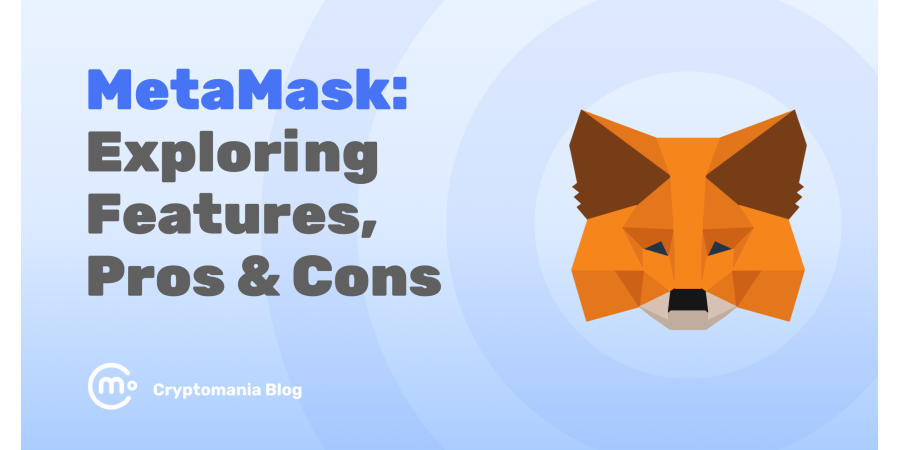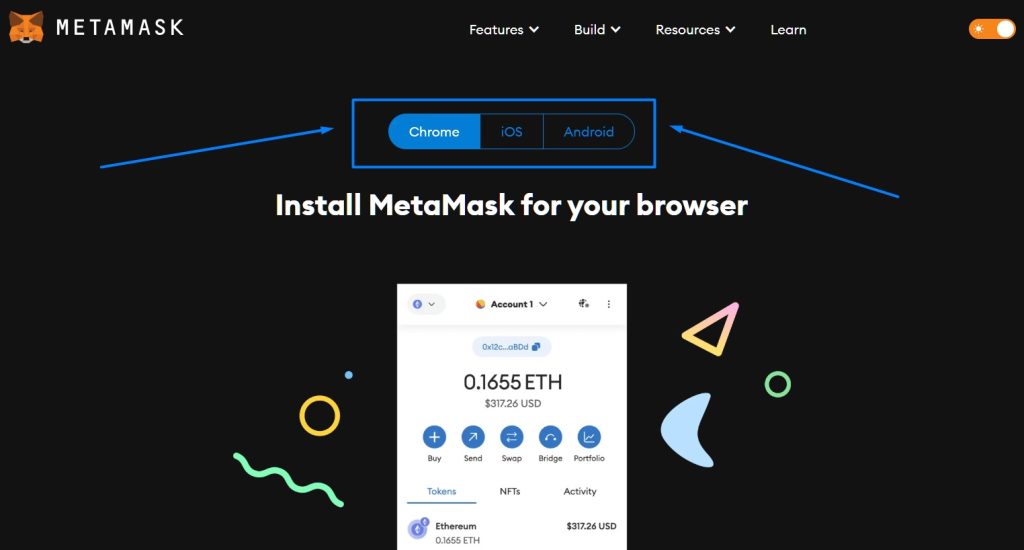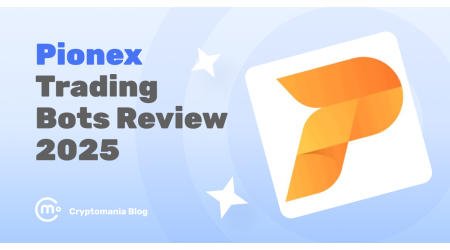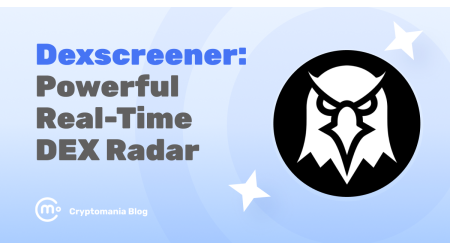MetaMask Wallet Review: A Comprehensive Look at Features, Pros and Cons
Jane Savitskaya


MetaMask is one of the most popular crypto wallets out there. From this Metamask review, you’ll learn why it’s perfect for anyone using Ethereum and other compatible networks. It stands out with its advanced token detection and the ability to fine-tune transaction costs, making it a powerful tool for managing crypto and DeFi activities.
MetaMask is easy to use and packed with features. Whether you’re dealing with ERC-20 tokens, diving into DeFi, or collecting NFTs, MetaMask quickly becomes an essential tool in your crypto toolkit. In this post, I’ll share why MetaMask is my go-to wallet and how it can enhance your crypto experience.
What is MetaMask?
MetaMask is a well-known browser extension that doubles as a crypto wallet linked to Ethereum. It’s like your gateway to Ethereum’s world of decentralized apps (Dapps), without needing to download the whole blockchain. That makes it super handy for hopping onto decentralized exchanges, gaming platforms, and more.
Plus, it plays nice with popular browsers like Chrome, Firefox, Brave, and Microsoft Edge. Besides storing ETH, it also handles tokens following Ethereum’s ERC-20 and ERC-721 standards.
| 👍Pros | 👎Cons |
| Compatibility with ERC-20 coins and Ethereum blockchain-based dApps | Limited to Ethereum-based ERC-20 tokens and ERC-721 NFTs |
| Support for Ledger/Trezor hardware wallets | No desktop app |
| Various payment options: ACH transfer, card payments, and digital wallets like PayPal | Lack of 2FA (two-factor authentication) |
| Adjustable gas fees for transactions |
How does MetaMask wallet work?
MetaMask is a self-custody wallet or hot wallet, meaning it’s connected to the internet, and your private keys are generated on an online device. Like most wallets, MetaMask uses two keys: a public key and a private key. The private key lets you spend or transfer crypto and approve transactions.
Nothing leaves your MetaMask wallet unless you sign the transaction with your private key, which was generated when you first set up your wallet.
The private key is a long string of numbers and letters, so most wallets use a recovery phrase of 12 to 24 words to help regenerate the private key if needed. MetaMask uses 12 words and also requires you to set up a password to secure your wallet.
MetaMask uses Ethereum as the default network, but it also supports multiple Ethereum-compatible networks like Polygon and Optimism. While you can see all your assets in the same wallet app, assets on each blockchain stay separate. You’ll need to switch networks to access the assets on each chain.
MetaMask lets you connect to popular dApps like Uniswap, a leading decentralized exchange, and games or metaverse projects like Axie Infinity and Decentraland.
For extra security, MetaMask can pair with hardware wallets like Ledger, adding another permission layer if an app wants to access your wallet. This extra step helps protect against scams and lets you confirm each transaction on your hardware device.
MetaMask features and benefits
MetaMask offers a range of features that make managing your crypto assets convenient and secure. However, it has some limitations that you should be aware of.
- Web3 functionality: MetaMask lets you buy, trade, and earn rewards on cryptocurrency and NFTs without needing to leave your assets with a centralized exchange.
- Conversion to cold storage: You can transfer your tokens to hardware wallets like Trezor and Ledger directly from the MetaMask browser extension for extra security.
- Open-source software: MetaMask is open source, meaning its code is available for developers and users to inspect and test for security.
- User-friendly interface: MetaMask is designed to be easy to use, making it accessible for both beginners and experienced crypto enthusiasts.
- Broad dApp support: MetaMask connects to a wide range of decentralized applications (dApps), including popular ones like Uniswap, Axie Infinity, and Decentraland.
- Multiple network support: While Ethereum is the default network, MetaMask also supports other Ethereum-compatible networks like Polygon and Optimism.
- Enhanced security: MetaMask allows for additional security measures, like pairing with hardware wallets, to protect against scams and unauthorized transactions.
Where MetaMask falls short
- Limited token support: MetaMask only stores tokens built on the Ethereum blockchain. If you want to store well-known coins like Bitcoin, you’ll need a different wallet for those non-Ethereum tokens.
- Phishing risks: As a popular wallet, MetaMask is often targeted by phishing attacks, and the lack of 2FA doesn’t help, so users need to be cautious about fake websites and extensions.
- Transaction fees: The transaction fees on Ethereum can be high, especially during peak times, which can make using MetaMask expensive for smaller transactions.
- No customer support: MetaMask lacks dedicated customer support, so users must rely on community forums and online resources for help with issues.
- Complexity for beginners: While MetaMask is user-friendly, the complexities of managing private keys and interacting with dApps can be daunting for new users.
Is MetaMask safe?
Yes, MetaMask is generally safe as long as you keep your Secret Recovery Phrase private and never share it with anyone.
MetaMask is a trusted crypto wallet used by over 30 million people worldwide, featuring robust security measures like encryption, Blockaid, and seed phrases. However, since it’s a hot wallet, it’s connected to the internet and potentially more vulnerable to online threats. For enhanced security, it’s best to use MetaMask in combination with a compatible hardware wallet.
For example, if you pair your Trezor hardware wallet with MetaMask, you’ll get a new “account” on MetaMask specifically for your Trezor. You’ll still retain your original MetaMask address, but the Trezor account will have the added security of the hardware wallet, providing an extra layer of protection for your assets.
How to set up a MetaMask account
First, you’ll need to add the MetaMask extension to your browser. To do this, go to the official MetaMask website at metamask.io and click the “Download” button.

Once the extension is added, you can create your wallet:
1. Open MetaMask: Click on the MetaMask icon (the fox logo) in your browser.
2. Get started: The MetaMask page usually opens automatically, if it doesn’t, click the “Let’s get started” button.
3. Create a Wallet: Choose the “Create a Wallet” option.

4. Save Your Seed Phrase: A seed phrase will be generated for you. This is the master key to your funds. Make sure to save it in a secure place and never share it with anyone. If you lose your seed phrase, you lose access to your wallet and funds.

5. Mobile App: Follow the same steps to download and set up the MetaMask app on your smartphone.
That’s it! You’re ready to start using MetaMask!
MetaMask vs Trust Wallet
Trust Wallet and MetaMask are two of the most popular crypto wallets, each with its strengths and unique features.
| MetaMask | Trust Wallet | |
| Compatibility | Chrome, iOS, Android | Web3, Android, iOS |
| Supported blockchains | Ethereum-based ERC-20 tokens and ERC-721 NFTs | Multiple blockchains |
| UI | User-friendly but not beginner-friendly | Beginner-friendly |
| DEX integration | Built-in aggregator | Integrated DEX |
| DeFi & DApps | ETH-compatible staking, DeFi, and DApps | Staking, DeFi, and DApps |
| Security features | Seed phrase, encrypted keys, biometric authentication | Seed phrase, encrypted keys, biometric authentication |
- MetaMask is primarily focused on Ethereum and Ethereum-compatible networks. MetaMask offers seamless integration with dApps and advanced features like custom gas fees. It also supports hardware wallets such as Trezor and Ledger. It is highly regarded among DeFi enthusiasts and NFT collectors for its user-friendly browser extension and mobile app.
- Trust Wallet, on the other hand, supports a wider range of cryptocurrencies beyond Ethereum. This includes Bitcoin, Binance Smart Chain, and many more. It offers a simple and intuitive mobile-only interface, making it accessible for users looking to manage various types of assets. Trust Wallet also has built-in staking for certain coins and a DApp browser for interacting with decentralized applications.
If you want to get a more detailed review on Trust Wallet, check out this post.
MetaMask customer support
MetaMask offers three support options: the Knowledge Base, Community Forums, and contacting a support agent.
It’s important to note that MetaMask is a self-custodial wallet. Therefore, customer support cannot reset passwords, reverse transactions, or access your Secret Recovery Phrase.
FAQ: How to add Base to MetaMask
Base is a Layer 2 rollup network on the OP Stack, launched on August 9, 2023, and backed by Coinbase. With over 100 million Coinbase users, Base has the potential to attract a huge new audience to DeFi, and many protocols are turning to Base to expand their user base. By connecting to Base, you can explore a wide variety of protocols available on the network.
Adding the Base network to MetaMask can be done manually or through platforms like Chainlist and blockchain explorers. Here’s how to do it manually.
Add Base to MetaMask Manually
1. Open MetaMask. From your MetaMask wallet dashboard, click the network dropdown in the top left corner of your wallet and select “Add network.”
2. Add Network Manually. A list of preset networks will appear, but Base isn’t included. Click on “Add a network manually.”
3. Enter Network Details. Fill out the form with the following details:
- Network Name: Base
- Network URL: https://developer-access-mainnet.base.org
- Chain ID: 8453
- Currency Symbol: ETH
- Block Explorer URL: https://basescan.org
4. Save. Click “Save” to complete the setup.
Base is now available in your MetaMask wallet. To switch to Base, click the network icon in the top left corner of your screen and select Base from the list of available networks. You can also add other EVM networks using this procedure, but you’ll need to find their specific network details.
Wrapping up
MetaMask is a versatile and user-friendly crypto wallet designed for Ethereum-based transactions, DeFi activities, and NFT management. It offers seamless integration with decentralized applications (dApps), advanced features like custom gas fees, and compatibility with hardware wallets for added security.
While it excels in Ethereum-focused functionalities, its support for non-Ethereum tokens is limited. Consider MetaMask if you prioritize Ethereum-based activities and value advanced features and dApp integration.
In contrast, Trust Wallet provides a broader range of cryptocurrency support, including Bitcoin and Binance Smart Chain, making it suitable for users with diverse asset portfolios. Its simple mobile interface, staking options, and DApp browser enhance convenience.
Ultimately, choosing between MetaMask and Trust Wallet hinges on your specific needs. MetaMask excels for Ethereum-centric activities and advanced features, while Trust Wallet caters to a wider range of cryptocurrencies and offers a straightforward mobile experience.





